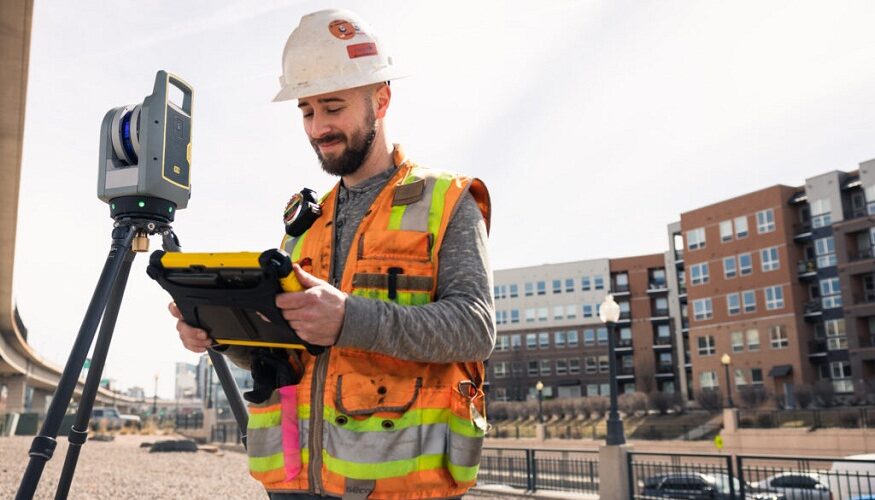General News Blog
My WordPress Blog
My WordPress Blog

Construction projects thrive on precision, and 3D laser scanning has emerged as a cornerstone technology to enhance accuracy. By capturing exact dimensions and detailed images of spaces, this tool reduces the margin of error significantly compared to traditional surveying methods. Through the use of advanced laser technology, the system creates a digital representation of the scanned area, often referred to as a point cloud. This allows engineers and architects to visualize complex geometries and design with unmatched accuracy.
One of the most impactful applications of 3D laser scanning in construction is in pre-construction planning. Before a single brick is laid or a foundation poured, this technology maps the project site. These digital blueprints provide comprehensive data, enabling teams to anticipate challenges before they arise. The result is a streamlined process, minimizing delays and avoiding costly mistakes caused by inaccuracies in traditional measurements.
Beyond planning, 3D laser scanning contributes significantly to quality assurance. During the construction process, it can compare the as-built conditions with the original designs in real time. Any discrepancies are flagged instantly, allowing for immediate adjustments. This level of precision ensures that the final structure adheres strictly to the design specifications.
3D laser scanning in construction not only enhances accuracy but also brings considerable cost-saving benefits. Traditional surveying methods often require substantial manual labor and can take days or weeks to deliver comprehensive results. In contrast, laser scanning can complete the same task in a fraction of the time, freeing up resources for other critical project areas.
Efficiency gains are also realized through better resource management. The rich data generated by 3D laser scanning allows project managers to make informed decisions about materials and manpower. By understanding the exact dimensions and layout of a site, materials are ordered with precision, minimizing waste. Similarly, tasks can be scheduled more effectively, reducing idle time and ensuring that each stage of the construction process proceeds without unnecessary interruptions.
Moreover, the ability to integrate 3D laser scanning data with other construction technologies, such as Building Information Modeling (BIM), creates a seamless flow of information. The integration helps eliminate redundant processes and fosters collaboration among project stakeholders. Engineers, contractors, and clients can access the same detailed visual data, aligning their efforts and avoiding misunderstandings that often lead to delays or budget overruns.
The long-term value of this technology extends beyond initial construction phases. Scanned data is stored digitally, providing a valuable resource for maintenance and future renovations. Facility managers can use these digital records to locate hidden utilities or understand structural details, further reducing costs associated with upkeep and repairs.
Safety is a critical concern in construction, and 3D laser scanning plays a pivotal role in mitigating risks. By generating detailed digital models, it minimizes the need for personnel to access potentially hazardous areas during initial site surveys. Workers can operate in a safer environment, guided by accurate data collected remotely.
This technology also contributes to safer project execution by identifying potential hazards early in the planning stages. The 3D models allow engineers to analyze complex structures and simulate different scenarios, ensuring the project design accounts for safety concerns before construction begins. As a result, the likelihood of accidents or structural issues is significantly reduced.
Sustainability is another area where 3D laser scanning in construction has a profound impact. By optimizing resource allocation, it minimizes material wastage, contributing to more environmentally friendly building practices. Additionally, the precise measurements generated by laser scanning reduce the need for rework, which often results in excess material use and energy consumption.
Another notable aspect of sustainability is the integration of 3D laser scanning into retrofitting and renovation projects. By accurately assessing the current state of existing buildings, construction teams can make informed decisions about preserving materials and adapting designs to fit the existing structure. This approach reduces the environmental footprint of renovation projects while maintaining the integrity of the original architecture.
The influence of 3D laser scanning in construction continues to grow, transforming the industry’s approach to planning, execution, and management. Its ability to provide unparalleled accuracy, improve efficiency, and enhance safety is revolutionizing traditional workflows. Construction professionals are now empowered to make data-driven decisions that benefit both the project and the environment.
The integration of this technology into construction practices has set a new standard for excellence. By addressing challenges in planning, cost management, safety, and sustainability, 3D laser scanning ensures that projects are completed with precision and care. As this tool becomes more accessible and widely adopted, its potential to shape the future of construction is boundless.